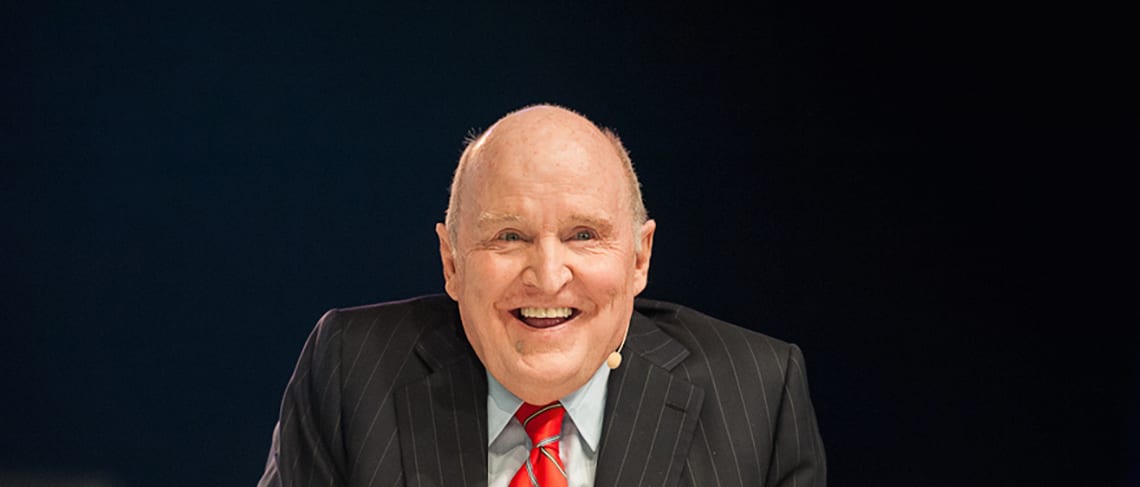
 Influential and iconoclastic are words often used describe cutting-edge business thinker Gary Hamel (TGLS 2009). He has been on the faculty of the London School of Business for more than 30 years and is the director of the Management Innovation eXchange. He recently wrote this insightful article for Harvard Business Review, identifying five ways to increase the likelihood of successful innovation in your organization.
Influential and iconoclastic are words often used describe cutting-edge business thinker Gary Hamel (TGLS 2009). He has been on the faculty of the London School of Business for more than 30 years and is the director of the Management Innovation eXchange. He recently wrote this insightful article for Harvard Business Review, identifying five ways to increase the likelihood of successful innovation in your organization.
Can you think of any business topic that’s been hotter for longer than innovation? Trouble is, it’s hard to think of any business challenge where real progress has been harder to come by. By now, your company probably has a new business incubator, an idea wiki, a disciplined process for mining customer insights, an awards program for successful innovators, and maybe even an outpost in Silicon Valley—all fine ideas—and yet, most likely, it still struggles to meet its growth goals and seldom thrills its customers. And it’s not just your company. In a McKinsey poll, 94 percent of the managers surveyed said they were dissatisfied with their company’s innovation performance.
By comparison, think of the long strides many businesses have made in reengineering their supply chains, boosting product quality, and rolling out lean six sigma. These efforts have paid huge dividends. And yet when it comes to innovation, the gap between aspiration and accomplishment seems as big as ever. What’s the problem?
Over the past two decades, we’ve led dozens of innovation projects and have talked to thousands of managers about the challenge of building a high-performance innovation “engine.” What we’ve observed is that in most organizations, the innovation powertrain is missing several critical components.
Imagine a car motor that lacks a transmission, timing belt, water pump or starter. The engine may be otherwise well built, but without just one of these components, it will be essentially worthless. So it is with innovation. However much brainstorming your employees do, it will come to naught if they don’t have access to the seed money they need to prototype and test their ideas. Likewise, no matter how slick your company’s online idea market, it won’t yield many high-value ideas if your associates haven’t been taught to think like innovators.
No single innovation tool or method will deliver consistent, profitable breakthroughs, and neither will a hodgepodge of misaligned or poorly integrated practices. It takes a systematic approach to build a systemic capability—whether that is Amazon’s logistics prowess or the near-flawless service you receive as a guest at a Four Seasons hotel. So it is with innovation. Skills, tools, metrics, processes, platforms, incentives, roles and values all have to come together in one supercharged, all-wheel-drive, race-winning innovation machine.
So what are the parts of the innovation engine that most often get left out? Here’s our list of the top five:
- Employees who’ve been taught to think like innovators
We’re a bit dumbfounded that so few companies have invested systematically in improving the innovation skills of their employees. The least charitable explanation for this oversight is that despite evidence to the contrary, many senior managers still assume that a few genetically blessed souls are innately creative, while the rest can’t come up with anything more exciting than suggestions for the cafeteria menu.
We understand how a CEO might come to such a conclusion. Every day, senior executives get bombarded with ideas—and most of them are either woefully underdeveloped or downright batty. After a while, it’s easy to believe that all those dopey ideas must be coming from dopes, rather than from individuals who haven’t been trained in or given opportunities to practice innovative thinking, and who work within a system that hasn’t been properly designed to foster it.
Much has been written about where innovation comes from and what distinguishes an innovative mind. Our research and experience suggest that inquiry is at the heart of it. Innovators have an inclination and a capacity to examine what others often leave unexamined. So if you want innovation, individuals must to be taught to do four things:
- Challenge invisible orthodoxies. Within any industry, mental models tend to converge over time. Executives read the same trade magazines, go to the same conferences, and talk to the same consultants. After a while, they all think alike. Innovators, by contrast, are contrarians. In their quest to upend industry rules, they learn how to distinguish “immutable laws” from “ingrained beliefs.” They exploit the unhealthy reverence incumbents have for precedent.
- Harness underappreciated trends. Innovators don’t spend much time speculating about what Instead, they pay a lot of attention to the little things that are already changing, and that are gathering speed. To be an innovator, you don’t need a crystal ball: you need a wide-angle lens. You have to be tracking trends your competitors haven’t yet noticed, then figuring out ways of using them to upend traditional business models.
- Leverage embedded competencies and assets. Innovation gets stymied when a company defines itself by what it does rather than by what it knows or owns—when its “concept of self” is built around products and services rather than around core competencies and strategic assets. Innovators see their organization, and the world around it, as a portfolio of skills and assets that can be endlessly recombined into new products and businesses. They are masters of recombination.
- Address “unarticulated” needs.Customers have their own orthodoxies, so asking them what they want seldom yields a fundamentally new insight. Instead, you have to observe them, up close and over time, and then reflect on what you’ve learned. Where are we creating needless frustrations? Where are we wasting our customers’ time? Where are we making things overly complex? Where are we treating customers like numbers instead of people? To be an innovator, you have to be a relentlessly curious anthropologist and a keen-eyed ethnographer.
With a bit of training, and some opportunities for real-world practice, just about anyone can significantly upgrade their innovation skills. Whirlpool Corporation’s strong innovation performance in recent years owes much to the fact that the company trained more than 15,000 of its employees to be business innovators. Any innovation program that doesn’t start by helping individuals to see the world with “fresh eyes” will almost inevitably fall short of expectations.
2. A sharp, shared definition of innovation
To manage innovation in a systematic way, you have to have a widely understood definition of innovation. Without this, it’s impossible to know how much “real” innovation is going on and whether it’s paying off. Just as critically, you can’t hold leaders responsible for innovation if no one can agree on what’s innovative and what’s not.
Coming up with a practical definition of innovation is harder than it sounds, particularly if the goal is to rank every new initiative or product by its “innovativeness.” When Heinz puts ketchup in a new squeeze bottle, is that innovation? When Comcast rolls out a new “triple play” pricing scheme, is that a breakthrough? When Whirlpool launches a washing machine that dispenses just the right amount of detergent, is that a game changer? While most people can distinguish between a genuine breakthrough (like the original iPhone) and a near-trivial product enhancement (like a new shade of Post-It® notes), it’s tougher to get agreement about all the shades of gray in between.
In our experience, it can take several months for a company to hammer out its definition of innovation. As a starting point, it is important to look back over a decade or two and identify the sorts of ideas that have produced noticeable margin and revenue gains.
For a product or service to be counted as innovative at Whirlpool, it must be unique and compelling to the consumer, create a competitive advantage, sit on a migration path that can yield further innovations, and provide consumers with more value than anything else in the market. This definition may seem somewhat generic. What makes it useful, though, is the understanding that has developed over time as these criteria have been used to determine which ideas are truly innovative and which aren’t. With use, the definition has gotten tighter, and differences of opinion have narrowed. It’s also important to periodically review the definition: did the products that got rated as highly “innovative” actually yield above-average returns?
Having a practical, agreed-upon definition of innovation makes it easier to set goals for innovation, to allocate resources to innovative projects, to plan a cadence of innovative product launches, to target advertising on high-value breakthroughs, and to measure innovation performance.
To read about the other three requirements in the original Harvard Business Review article, click here.

 Cal Jernigan is the Senior Pastor of Central Christian Church, a multisite church in Mesa, Arizona that has been a Summit Host Site since 2006. In the post below, Cal finds a unique insight into Leadership Legacy from an often over-looked biblical passage about Israel’s King Johoram.
Cal Jernigan is the Senior Pastor of Central Christian Church, a multisite church in Mesa, Arizona that has been a Summit Host Site since 2006. In the post below, Cal finds a unique insight into Leadership Legacy from an often over-looked biblical passage about Israel’s King Johoram. 















Recent Comments